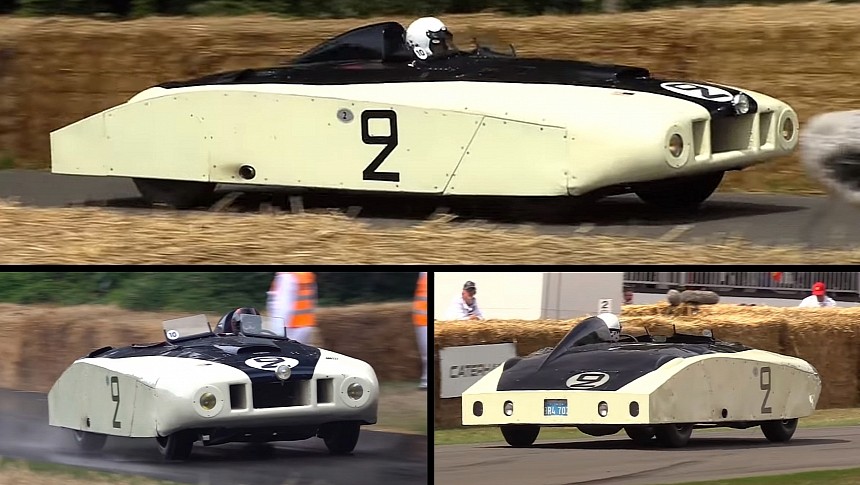In 2023, Cadillac returned to the 24 Hours of Le Mans after a 21-year hiatus. The venture saw the American company score its first podium in the iconic event, with a V-Series R finishing third behind a Ferrari 499P and a Toyota GR010 Hybrid.
It was a massive result for an automaker that's rarely associated with endurance racing. Cadillac previously competed at Le Mans in 2000-2002 with the Northstar LMP. The campaign was unsuccessful, with just one top-ten finish in three years.
The Northstar LMP was the first Cadillac to hit Circuit de la Sarthe in 50 years. The previous attempt occurred in 1950 and had no factory involvement. The entry was led by Briggs Cunningham, an American entrepreneur who raced various cars at Le Mans from 1950 through 1963.
Briggs drove vehicles developed by his own company but also took on the world's greatest endurance race in Jaguars and Maseratis. He scored class wins at Le Mans in 1952 and 1962. Additionally, he also won the 12 Hours of Sebring three times.
Briggs's first attempt at Le Mans also saw the first Cadillac hit the French circuit. The American brought a pair of Cadillac Series 61 models to Circuit de la Sarthe, but only one was a slightly modified version of the production model. He rebodied the second Cadillac into a highly aerodynamic speedster. The car looked so unusual that the French media named it "Le Monstre." Yup, that's French for "The Monster."
Cunnigham took full advantage of contemporary Le Mans regulations to build his strange-looking race car. While engine swaps were illegal, body modifications were permitted. In fact, I should say that builders could have raced anything as long as the chassis and the engine were very close to production specifications.
Briggs removed the standard Series 61 body entirely and replaced it with a "thick wing" shell developed with Grumman Aircraft Engineering Corporation. Tested in a wind tunnel, which was groundbreaking at the time, the "Le Monstre" emerged as a wing-shaped roadster with fully skirted wheels.
The radical prototype retained the stock 331-cubic-inch (5.4-liter) overhead-valve V8 of the Cadillac Series 61 coupe, but Cunningham switched to a five-carburetor setup. The revised engine enabled the car to hit a top speed of 130 mph (210 kph), nearly 20 mph (32 kph) more than the regular coupe.
Driven by Cunningham and Phil Walters, the heavily modified Cadillac finished the race 11th overall, just behind the production De Ville manhandled by Miles and Sam Collier. That's because Briggs got stuck in the sand bank for about 30 minutes.
But even though it doesn't have a notable finish to brag about, the "Le Monstre" remains one of the most radical cars ever raced at Le Mans. And amazingly enough, Cunningham's creation soldiered on for more than 70 years to tell its story.
The one-off spider was most recently driven at the 2023 Festival of Speed. And you can watch it doing parade laps up the Goodwood hillclimb course in the video below.
The Northstar LMP was the first Cadillac to hit Circuit de la Sarthe in 50 years. The previous attempt occurred in 1950 and had no factory involvement. The entry was led by Briggs Cunningham, an American entrepreneur who raced various cars at Le Mans from 1950 through 1963.
Briggs drove vehicles developed by his own company but also took on the world's greatest endurance race in Jaguars and Maseratis. He scored class wins at Le Mans in 1952 and 1962. Additionally, he also won the 12 Hours of Sebring three times.
Briggs's first attempt at Le Mans also saw the first Cadillac hit the French circuit. The American brought a pair of Cadillac Series 61 models to Circuit de la Sarthe, but only one was a slightly modified version of the production model. He rebodied the second Cadillac into a highly aerodynamic speedster. The car looked so unusual that the French media named it "Le Monstre." Yup, that's French for "The Monster."
Cunnigham took full advantage of contemporary Le Mans regulations to build his strange-looking race car. While engine swaps were illegal, body modifications were permitted. In fact, I should say that builders could have raced anything as long as the chassis and the engine were very close to production specifications.
Briggs removed the standard Series 61 body entirely and replaced it with a "thick wing" shell developed with Grumman Aircraft Engineering Corporation. Tested in a wind tunnel, which was groundbreaking at the time, the "Le Monstre" emerged as a wing-shaped roadster with fully skirted wheels.
The radical prototype retained the stock 331-cubic-inch (5.4-liter) overhead-valve V8 of the Cadillac Series 61 coupe, but Cunningham switched to a five-carburetor setup. The revised engine enabled the car to hit a top speed of 130 mph (210 kph), nearly 20 mph (32 kph) more than the regular coupe.
Driven by Cunningham and Phil Walters, the heavily modified Cadillac finished the race 11th overall, just behind the production De Ville manhandled by Miles and Sam Collier. That's because Briggs got stuck in the sand bank for about 30 minutes.
But even though it doesn't have a notable finish to brag about, the "Le Monstre" remains one of the most radical cars ever raced at Le Mans. And amazingly enough, Cunningham's creation soldiered on for more than 70 years to tell its story.
The one-off spider was most recently driven at the 2023 Festival of Speed. And you can watch it doing parade laps up the Goodwood hillclimb course in the video below.










